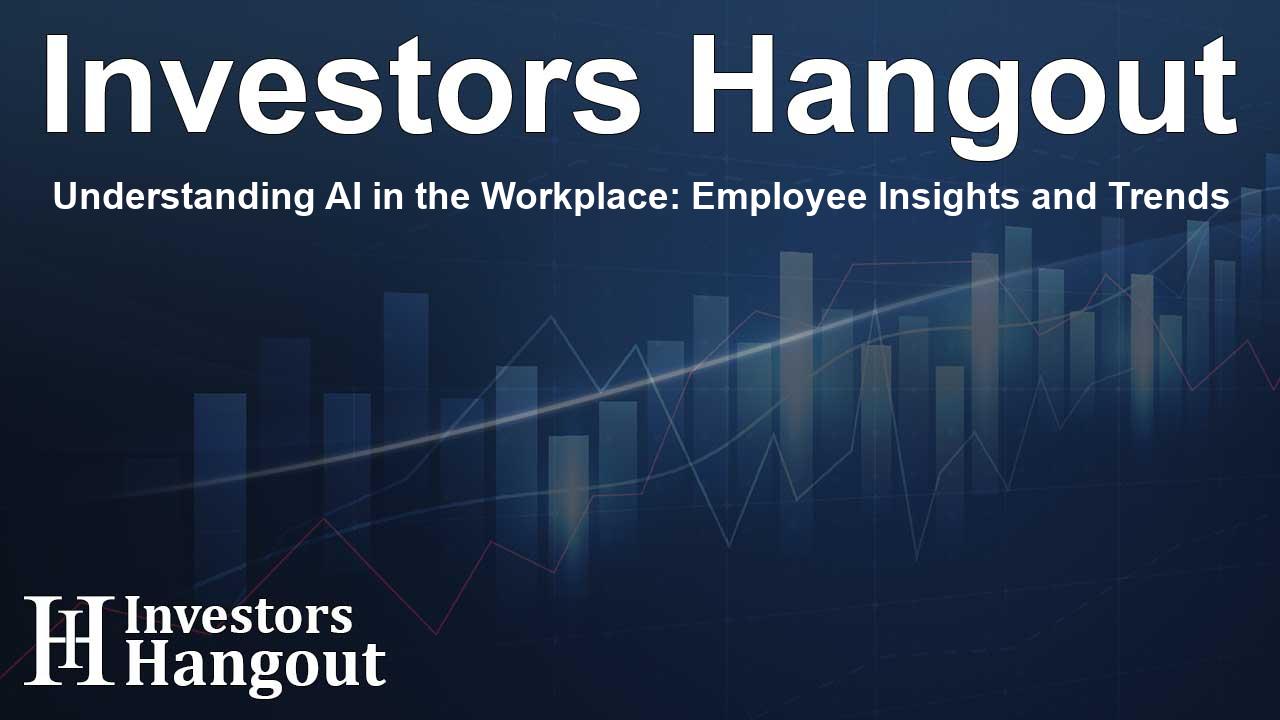Understanding AI in the Workplace: Employee Insights and Trends

The Impact of AI on the Workplace: Insights from Employees
The utilization of artificial intelligence (AI) in modern workplaces is rapidly increasing. A fresh study sheds light on the ongoing gap between employee expectations and employer initiatives regarding AI monitoring and strategies. A mere 22% of employees in the US believe their employers are actively overseeing their use of AI, presenting a significant oversight in the integration of this technology.
Employee Experiences with AI
According to recent findings, while a whopping 80% of employees express positive feelings towards AI in their work settings, only 36% report that their company has an established AI policy. This disconnect suggests many companies may be missing an opportunity to harness the potential benefits that AI can offer. Employees frequently use free AI platforms, with a notable 60% opting for these resources over more proprietary or costly solutions that employers might provide.
Communication Gaps
Jen Clark, an expert in technology enablement, remarks on the evident communication gap. She emphasizes the opportunity for employers to create a meaningful AI strategy that not only encompasses monitoring but also ensures that employees are informed and educated on how to effectively use AI tools. The lack of oversight from employers is a call to action for organizations to step up their game in developing and communicating AI policies comprehensively.
The Trust Factor: Employee Confidence in AI
Even as employees become more reliant on AI, many face hurdles along the way. Approximately 68% encounter errors and inaccuracies when using AI technology. Despite this, there remains a strong confidence in AI outputs, with 82% of employees feeling either "very" or "somewhat" confident about the results they receive from AI tools. This paradox illustrates a complex relationship where employees recognize the potential of AI while simultaneously grappling with its imperfections.
Efficiency vs. Personal Time Utilization
Interestingly, the survey indicates that 64% of respondents utilize the time saved by AI to complete additional work tasks. However, some also allocate this time to personal activities. For instance, 19% take walks, and 16% use their AI-saved time for lunches, revealing a trend toward enhancing work-life balance through AI.
Job Security Concerns among Employees
A considerable number of employees—52%—express apprehension regarding job security tied to AI advancements. The concern varies widely among different sectors; employees in wholesale trade appear most anxious, while those in real estate display the least worry. Despite these concerns, the incorporation of AI in their daily tasks is seen as essential for staying productive and relevant in today’s job market.
Generational Differences in AI Perception
When examining attitudes towards AI usage, generational differences are pronounced. Employees aged 18-34 report significantly higher satisfaction with AI—59% feel happier at work due to AI usage, whereas only 29% of workers aged 55 and older share this sentiment. This indicates a shift in workplace dynamics as younger employees embrace AI technology more readily than their older colleagues.
Understanding the Need for AI Policy Development
As companies look to the future, establishing a clear policy surrounding AI use becomes increasingly important. With significant percentages of employees recognizing the value of AI in onboarding processes, organizations could enhance employee morale by implementing thoughtful AI integration during critical phases of employment.
Conclusion: Leveraging AI for Workplace Innovation
Ultimately, the challenge lies in how organizations navigate the integration of AI while ensuring employees feel secure and supported. As AI becomes more ingrained in corporate culture, proactive measures need to be taken to align employee experiences with employer expectations. Fostering open communication and establishing comprehensive AI policies can help bridge the existing gaps of understanding and trust in the workplace.
Frequently Asked Questions
1. How does AI impact employee productivity?
AI tools allow employees to automate repetitive tasks, leading to time efficiency and increased productivity. Many users report that they use the time saved to complete additional work.
2. Are employees concerned about AI in their jobs?
A significant portion of employees, around 52%, express worries about potential job displacement or changes resulting from AI integration in their work processes.
3. What are the perceptions of AI between different generations?
Younger employees (aged 18-34) generally demonstrate a more favorable view of AI compared to older generations, with higher levels of reported happiness linked to its use in the workplace.
4. Why is it important for companies to have an AI policy?
Having an AI policy ensures that employees understand the guidelines and expectations surrounding AI usage, fostering trust and productivity while mitigating risks associated with unmonitored AI applications.
5. How can companies bridge communication gaps regarding AI use?
Employers can improve communication by actively engaging with employees about AI policies, providing training, and encouraging dialogue around AI integration and responsibilities.
About The Author
Contact Hannah Lewis privately here. Or send an email with ATTN: Hannah Lewis as the subject to contact@investorshangout.com.
About Investors Hangout
Investors Hangout is a leading online stock forum for financial discussion and learning, offering a wide range of free tools and resources. It draws in traders of all levels, who exchange market knowledge, investigate trading tactics, and keep an eye on industry developments in real time. Featuring financial articles, stock message boards, quotes, charts, company profiles, and live news updates. Through cooperative learning and a wealth of informational resources, it helps users from novices creating their first portfolios to experts honing their techniques. Join Investors Hangout today: https://investorshangout.com/
The content of this article is based on factual, publicly available information and does not represent legal, financial, or investment advice. Investors Hangout does not offer financial advice, and the author is not a licensed financial advisor. Consult a qualified advisor before making any financial or investment decisions based on this article. This article should not be considered advice to purchase, sell, or hold any securities or other investments. If any of the material provided here is inaccurate, please contact us for corrections.
